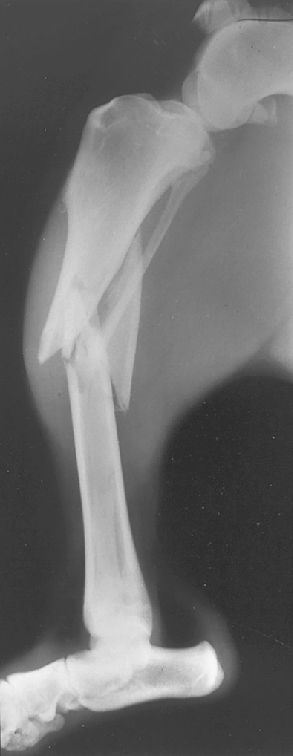

- COMMINUTED OPEN FRACTURE PICTURES UPDATE
- COMMINUTED OPEN FRACTURE PICTURES SKIN
- COMMINUTED OPEN FRACTURE PICTURES CRACK
In a comminuted fracture, the bone shatters into three or more pieces.
COMMINUTED OPEN FRACTURE PICTURES SKIN
In severe cases, this can be a comminuted fracture where the bone shatters into many pieces and/or an open fracture with an open skin wound at the site where the bone broke. Non-Displaced Fractures vs Displaced FracturesĪ non-displaced fracture or stable fracture is one in which the broken ends of a bone are in alignment, i.e., they line up and are barely out of place.Ī displaced fracture is one where two or more pieces of bone are not properly aligned. Open or compound fractures are risky because they make it easy for bacteria and contaminants to enter the wound and invade the body. In an open fracture, the broken bone breaks through the skin or there is an open wound on the outer surface that exposes bone. Closed Fractures vs Open Fractures (Compound Fractures)Ī closed fracture is one in which there is a break in the bone line, but the overlying skin is intact. Simple Fractures vs Complex FracturesĪ simple fracture is one in which there is a break in the bone, but the overlying skin is intact.Ī complex fracture results from a traumatic injury with multiple breaks in the bone and damage to the surrounding soft tissue. In a complete fracture, the affected bone is completely broken into two or more pieces. Greenstick fractures mostly occur in children under 10 years of age.
COMMINUTED OPEN FRACTURE PICTURES CRACK
In other words, there is a hairline crack or incomplete break in the bone, and the fragments are not entirely separated. Partial Fractures vs Complete FracturesĪ partial or greenstick fracture is one in which the bone cracks but does not break completely.

Some of the common fracture types are described below: Traumatic Fractures vs Pathologic FracturesĪ traumatic fracture occurs due to applying an extreme external force to a bone, such as during a car accident or fall.Ī pathologic fracture occurs without any outside force due to a pre-existing health condition like osteoporosis or bone cancer. What are the different types of bone fractures? If bone fragments are sticking out through the skin or there is an open wound that penetrates down to the bone, there is a risk of complications like wound and bone infections, representing a medical emergency. Some injuries can cause the bone to shatter into many pieces. On the other hand, if the severity of the force is very great and the bone breaks into separate fragments, it is a more serious type of fracture. If the bone’s breaking point is exceeded only slightly by an outside force, it may crack but not break all the way through. Other symptoms of fractures can include bruising, swelling, tenderness, deformity, and overlying skin wounds. What are the common symptoms of a bone fracture?Ī broken bone can be very painful and may prevent you from moving the injured area. The most common causes of bone fractures are trauma (sports injuries, motor vehicle accidents, falls), osteoporosis (a condition characterized by weak or brittle bones), and overuse or stress (this is more common in athletes). What are the most common causes of bone fractures? There are different types of bone fractures. The risk of fractures is higher in children, but fractures tend to be more complicated in adults because bones become more brittle with age. Although bones can bend to some degree, if the external force is too great, they reach a breaking point and snap. Fractures occur when an outside physical force is applied to a bone. 6, 2022.A fracture or broken bone is extremely common-the average person experiences two broken bones in the course of their lifetime.
COMMINUTED OPEN FRACTURE PICTURES UPDATE
Update on medical management of acute hip fracture. Centers for Disease Control and Prevention. American Academy of Orthopaedic Surgeons. Hip fractures in adults: Epidemiology and medical management.


 0 kommentar(er)
0 kommentar(er)
